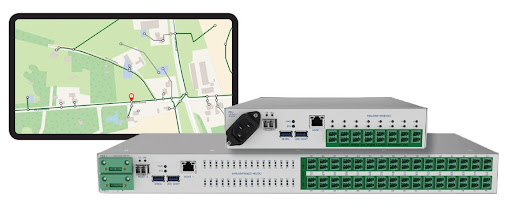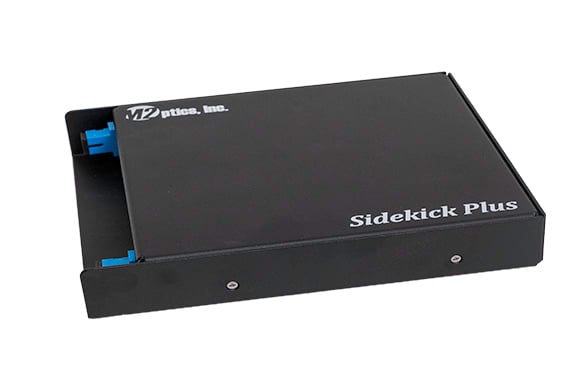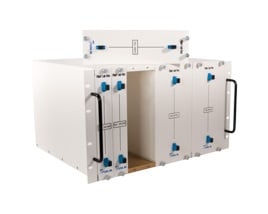
From the planet's largest machine to the latest quantum encryption, optical fibers play a key role in technology innovation as they enable phenomenally high data rates. Installed at the depths of the oceans, throughout cities, and in the most hostile environments on earth, optical fibers serve as the backbone for connecting global communications systems and delivering massive amounts of data every day.
Read More
Topics:
fiber optic testing,
network simulation,
latency

In addition to serving as an important workspace, today’s fiber optic testing labs often host visitors like potential customers or technology partners for demonstrations. As a result, the appearance of the lab is important and can influence a visitor’s perception of the company. A crowded or disorganized lab is not only challenging for engineers to use, but it can also result in a negative impression or leave questions in one’s mind: If things are this disorganized, can I trust the results I’m seeing? Are projects completely efficient? This is especially the case if a visitor was recently at a competitor’s lab that spared no expense in terms of making an effort to maintain a top-notch lab space.
Read More
Topics:
fiber optic testing,
optical fiber,
network simulation

Interested in learning more about remote fiber test systems and how they work? Intended for those seeking a better understanding of solutions for successfully maintaining fiber optic networks, this article focuses on remote fiber testing systems, which are a valuable tool for network operations teams.
Read More
Topics:
fiber optic testing,
otdr,
fiber monitoring
When fiber optic field technicians need to test the integrity of a fiber optic cable, they use an Optical Time Domain Reflectometer (OTDR) device that identifies and pinpoints issues like breaks/faults and poor splices, while also certifying the cable length. To find and resolve issues in the fiber cable quickly and efficiently, it’s critical that they not only have a reliable OTDR device, but just as importantly know how to use it properly in terms of selecting the necessary settings and interpreting the results correctly. This is achieved by receiving thorough training in the classroom prior to heading out into the field.
Read More
Topics:
fiber optic testing,
otdr
Undersea cabling has connected continents for more than 100 years. With exponential growth in bandwidth demands, private companies have begun large investments in underwater fiber optic cable to serve their customers’ needs. Because of the unique deployment and additional risks associated with underwater cabling, training and testing with the help of M2 Optics is critical.
Read More
Topics:
fiber optic testing,
submarine fiber cable
This year’s OFC conference in San Diego will be another showcase of innovative new and future technologies. With fiber optic communication and networking equipment continuing to evolve, testing procedures and setups must also grow and change as part of the process. Engineers are then often faced with a challenge - how can they continue to add and integrate new systems and the appropriate connectivity infrastructure in a finite amount of lab space? While some may benefit from new facility expansions, the luxury of additional square footage and rack space isn't often the case for most.
Read More
Topics:
fiber optic testing,
optical fiber,
optical time delays
If you are in the line of work where you are simulating networks using optical fiber, it is safe to assume that you have a few spools of bare fiber sitting in your test environment. The importance of ensuring your fiber-based network devices will work as envisioned before deployment in the field is vital. However, running simulations using unprotected or unsecured spools fiber can prevent you from producing the maximum results due to challenges that can arise.
Read More
Topics:
fiber optic testing









